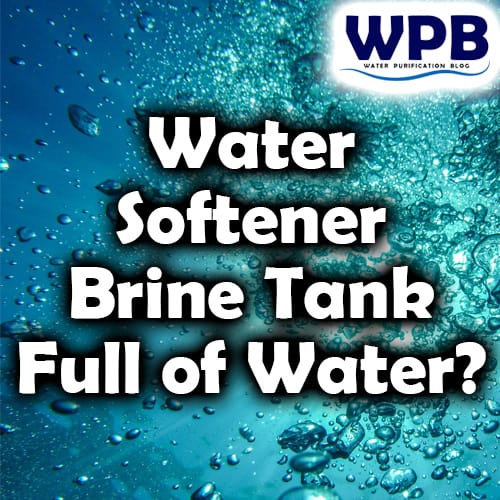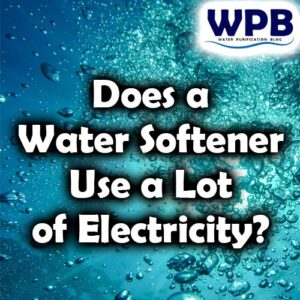Why Is My Water Softener Brine Tank Full of Water?
Water softeners are essential appliances used in many households, providing a solution to hard water problems. Water softeners use a process called ion exchange to remove minerals that cause water hardness and limescale problems.
While water softeners are generally reliable, occasionally, issues can arise, leaving homeowners puzzled about why is their water softener brine tank full of water.
Here we will explore the reasons behind this water softener problem and see the possible solutions.
Table of Contents
Understanding the Operation of a Water Softener
Before diving into the issue of a full brine tank, let’s understand how a water softener works.
Water softeners typically consist of two main parts: a resin tank with an automatic control valve and a brine tank.
The resin tank contains resin beads that attract and remove hardness minerals, such as magnesium and calcium minerals, from the water. As the water passes through the resin tank, the hardness ions are exchanged with sodium ions, effectively softening the water.
So, You have hard water at the water softener’s inlet, and soft water at the outlet.
When the water softener uses it’s operating capacity it is time to regenerate. Regeneration is the process of drawing the salt brine solution through the ion exchange resin beads.
If your softener brine tank is full of water, it might be a sign that the softener in not working as it should.
Importance of the Salt Tank For A Water Softener Operation
The salt tank plays a crucial role in the water softening process.
It is responsible for regenerating the resin beads by flushing them with a highly concentrated brine solution, known as brine.
During the regeneration cycle, the brine solution is drawn into the resin tank, replacing the hardness ions from the resin and recharging it with sodium ions.
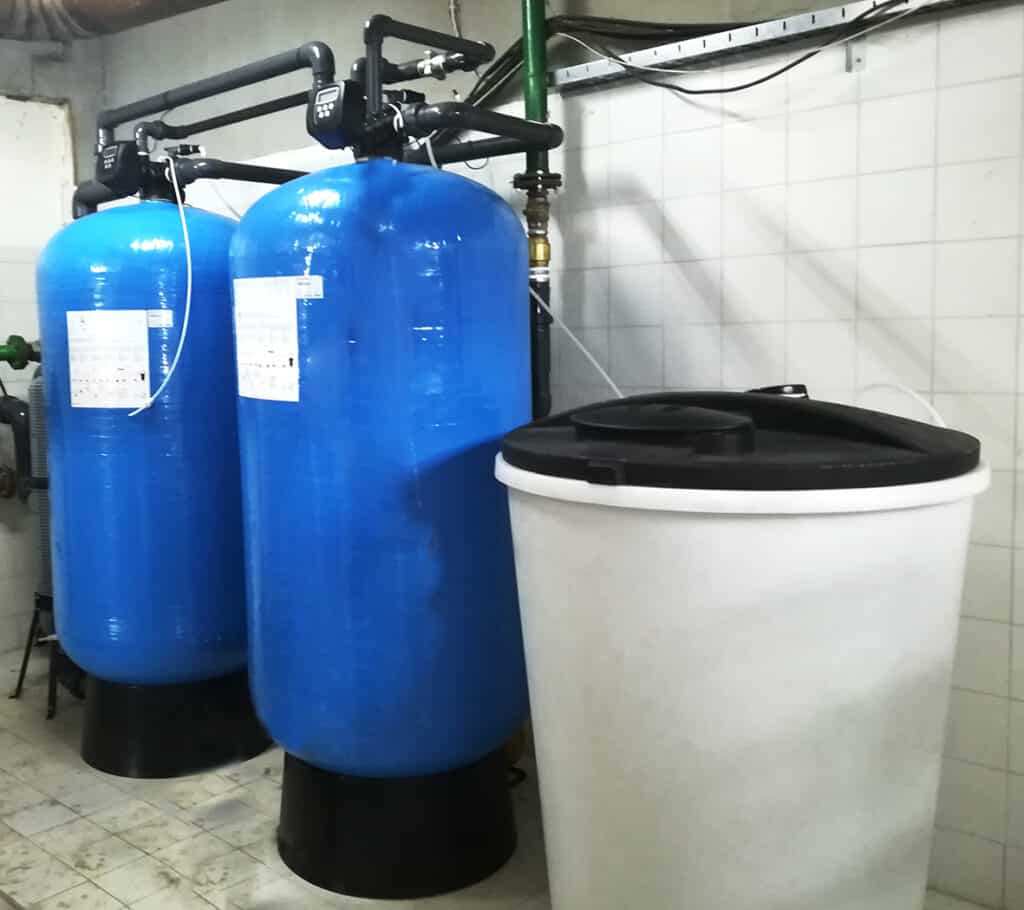
Common Issue: Water Softener Brine Tank Full of Water
One common issue that homeowners may encounter is finding their softener brine tank full of water. This situation can be perplexing, as the brine tank should normally contain water up to half the height of the tank.
There are several possible causes for a full brine tank, and it’s important to understand the consequences it can have on the water softening process.
Causes of a Water Softener Brine Tank Full of Water
- Salt Bridge: A salt bridge forms when a hard crust or layer of salt forms at the bottom of the brine tank, leaving a gap between the salt and the water. This bridge prevents the proper dissolving of salt and inhibits the creation of brine, resulting in a full brine tank.
- Clogged Drain Line Flow Control: If the drain line flow control of the softener gets clogged or obstructed, it can prevent the water from properly draining out during the regeneration cycle. As a result, the brine tank may remain full of water. Also, the settings about the drain line flow control in the valve should be checked.
- Broken Brine Line Flow Control: If the brine line flow control is damaged or broken, the flow through it is much higher than it needs to be. As the brine fill phase is determined by time, with a higher flow rate the tank will get filled with too much water. Also, the settings about the brine line flow control in the valve should be checked.
- Malfunctioning Brine Tank Valve: A malfunctioning brine valve can cause water to continuously flow into the brine tank, leading to an overfilling issue.
- Low Water Pressure: If the water pressure is too low, the injector assembly can not make the required vacuum, and the brine is not drawn from the tank.
Consequences of a Water Softener Brine Tank Full of Water
Having a brine tank full of water means that the regeneration process is not done properly and that your water softener is not working as it should.
When the brine tank is not functioning as it should, the ion exchange resin is not adequately regenerated, reducing it’s capacity to remove hardness minerals from the water.
As a result, the water softener does not provide soft water, leading to hard water issues such as scale buildup and reduced soap efficiency.
How Much Water Should Be In a Softening System’s Brine Tank?
The rule of thumb is that You should never see the water level is over the salt level. This also means that the salt level is always above 3/4 of the tank height.
Approximately, the normal water level should be between 1/2 and 3/4 of the tank’s height.
Troubleshooting a Water Softener Brine Tank Full of Water
If you discover that your water softener’s brine tank is full of water, it’s important to troubleshoot the issue promptly to restore the proper functioning of the system. Here are some steps you can take to address the problem:
Check if the Softener is Drawing Brine from the Salt Tank
The check if the softener is drawing the brine you should manually start a regeneration. Usually the first regeneration phase is the Backwash cycle.
You should wait for this phase to finish or jump it over and continue the regeneration.
The second phase should be the Brine cycle. Now you should mark the level of water in the tank. Wait a few minutes and check if the brine solution level dropped.
If after a few minutes the water level is the same, there is a problem with the injector, brine line flow control, drain line flow control, or the sealing of the pipe which connects the tank and a softener. Check if the pipe is securely attached to the valve and to the tank.
Check the Salt Level
Begin by inspecting the salt level in the brine tank. Ensure that there is an adequate amount of salt present.
A low salt level can prevent the proper creation of brine. If the salt level is low, add the appropriate amount of salt recommended by the manufacturer.
Inspect the Brine Valve
Next, examine the brine valve. This valve controls the flow of water from and into the brine tank during the regeneration cycle.
If the valve is malfunctioning or stuck open, it can cause the brine tank to continuously fill with water. Clean or replace the valve if necessary, following the manufacturer’s instructions.
Examine the Float Assembly
The float assembly is responsible for regulating the water level in the brine tank. If the float assembly is faulty or obstructed, it may not function properly, resulting in a full brine tank. Check for any debris or damage to the float assembly and clean or repair it accordingly.
Check the Drain Line of Your Water Softener
Start a regeneration and check if the water flow of the drain line is normal. The water flow should be higher in the Backwash and Fast Rinse phases.
Check the Brine Tank Overflow Connection
To prevent overflowing from the tank, also check the overflow connection that is located on the outside of the tank.
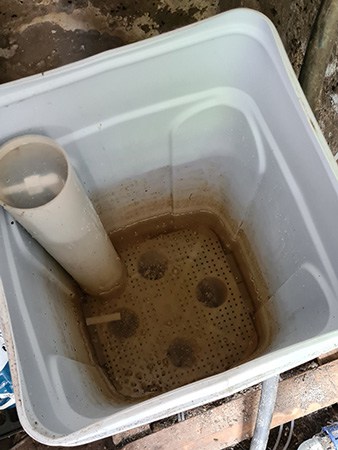
Preventing a Full Salt Tank
Taking preventive measures can help avoid the issue of a full brine tank in the future. Here are some steps you can follow to prevent this problem:
Regular Water Softener’s Brine Tank Maintenance
Regular salt tank maintenance is crucial for optimal water softener performance. Follow the manufacturer’s guidelines for routine maintenance tasks, such as cleaning the brine tank, checking for possible salt clog, checking and replenishing salt levels, and inspecting valves and float assemblies.
By keeping the system well-maintained, you can minimize the risk of creating a salt clog which can lead to a full brine tank.
Adjust Water Softener Settings
Make sure your water softener is appropriately selected to your household’s water hardness level. Adjusting the settings according to the actual water hardness will ensure that the system regenerates efficiently and prevents issues like a full brine tank. Consult the user manual or seek professional assistance to adjust the settings accurately.
Sometimes, electrical power shock can burn the circuit board of of the control valve. In this case You will notice that the water softener is not functioning at all, and a circuit board replacement will be needed.
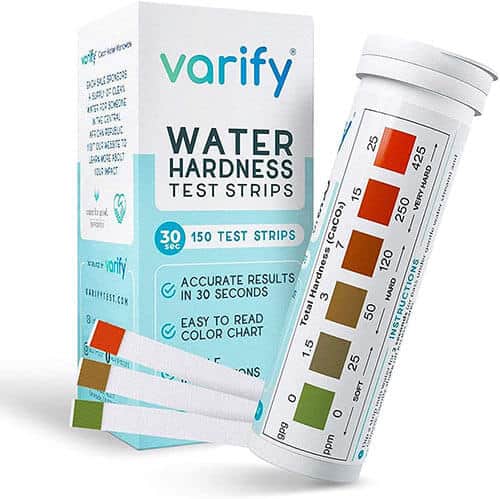
Water Hardness Test Kit – Fast and Accurate Cost Effective Water Hardness Test Strips
Save time and get accurate water test results within seconds. Simply take one of the provided test strips and dip the test strip into the water. Compare the test strip colors with the large color chart on the bottle. This is your water hardness result.
No need to visit a store or wait for someone else to test the quality of your water.
Enjoy consistently accurate and reliable results whenever you need them.
Ideal for you water softener operation control.
Water Softener Salt Tank Full of Water FAQs
1. Can I use any type of salt in my water softener?
It’s recommended to use salt specifically designed for water softeners, such as evaporated or solar salt. Avoid using rock salt or table salt, as they may contain impurities that can affect the performance of your system.
2. How often should I clean my brine tank?
Cleaning the brine tank once or twice a year is generally sufficient. However, if you notice any buildup or unusual odor, it’s advisable to clean it more frequently.
3. Can a full brine tank cause damage to my water softener?
While a full brine tank can impact the performance of your water softener, it is unlikely to cause significant damage. However, it’s important to address the issue promptly to ensure optimal functioning and longevity of the system.
4. Can I repair a malfunctioning brine valve myself?
Minor issues with the brine valve, such as clogs or debris, can be resolved by cleaning or replacing the valve. However, if you are unsure or the problem persists, it’s advisable to seek professional assistance. They have the expertise to diagnose and repair complex valve issues accurately.
5. Is a full brine tank a sign that my water softener needs to be replaced?
Not necessarily. A full salt tank is usually a symptom of a specific issue rather than an indication that the entire system needs replacement. By troubleshooting the problem and addressing the underlying cause, you can often restore the functionality of water softener systems without the need for a complete replacement.
6. Can a high water level or flooding contribute to a full brine tank?
In some cases, a high water level or flooding can impact the functioning of a water softener, including the salt tank. Excessive water levels can interfere with the drainage process during regeneration, leading to a full salt tank. If you suspect this to be the cause, consult a professional to evaluate the situation and make necessary adjustments or modifications.
7. Why does my brine tank still have water after regeneration?
It is normal for a small amount of water to remain in the brine tank after the regeneration cycle, but you should not see the water in the tank. It should be only a few centimeters of water left in the tank.
However, if the salt tank is full of water after the brine draw phase of regeneration, it indicates a potential issue with water pressure, damaged brine valve or a damaged injector, and that requires further investigation and troubleshooting.
8. How can I ensure the longevity of my water softener?
To extend the lifespan of your water softening system, follow regular maintenance practices, such as cleaning the salt tank, checking salt levels, and inspecting components. Additionally, be mindful of the quality and type of salt used, and consider having your system professionally serviced periodically for optimal performance and longevity.
Conclusion
A water softener tank full of water can disrupt the efficient operation of your water softening system. However, with proper troubleshooting and maintenance, you can quickly resolve the issue and enjoy the benefits of soft, clean water once again. Regular inspections and maintenance are key to preventing this problem in the future, saving you time and money in the long run.
By taking proactive measures and staying informed about your water softener system, you can ensure your home continues to enjoy the benefits of soft water, leading to improved water quality and extended softener lifespan.
If you’re unsure about how to address the issue or need professional assistance, don’t hesitate to contact a qualified water softener technician.
As a final conclusion, a full brine tank in your water softener can be a concerning issue, but by understanding the causes and implementing troubleshooting steps, you can resolve the problem effectively. Regular maintenance and preventive measures are key to preventing the recurrence of a full brine tank. By taking care of your water softener system, you can enjoy the benefits of softened water and ensure its efficient operation for years to come.

Who am I?
I am working as a water treatment technical manager and I have more than 25 years of practical experience in water purification.
Water purification expert
After many years of experience in water purification, I want to share some of my knowledge and get people to know the real importance of water quality.
Water purification and water treatment are very complex themes, so it is important to explain them in an easy-to-read way.
On this blog, you will find many understandable, easy-to-read information about water purification.
I hope you enjoy it, find some useful information, and thank You for reading.
More info on my work and my expertise on water purification can be found on my LinkedIn profile.

